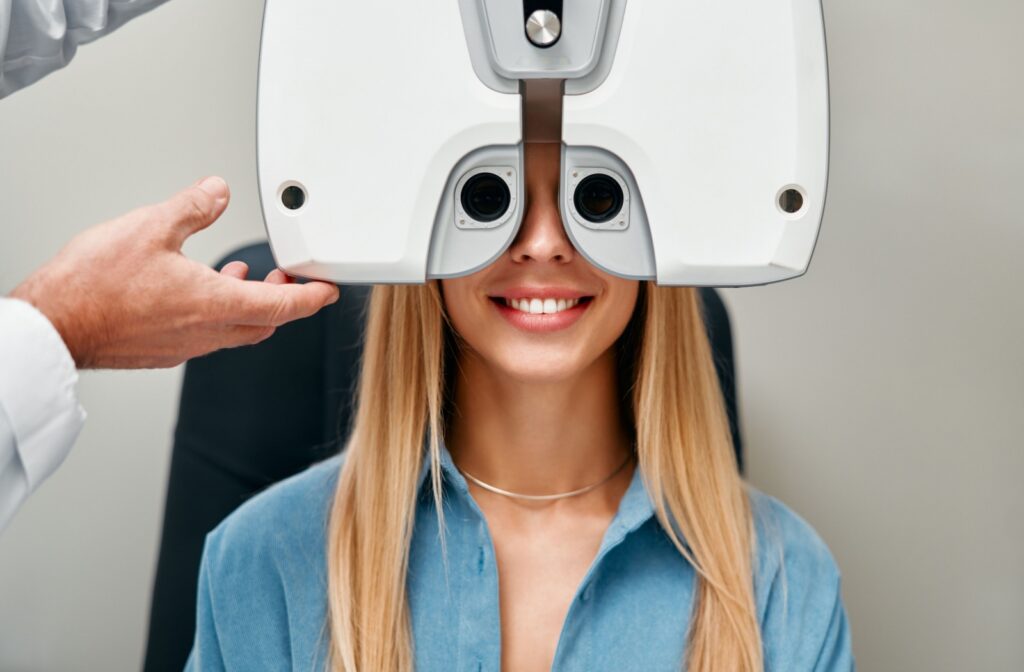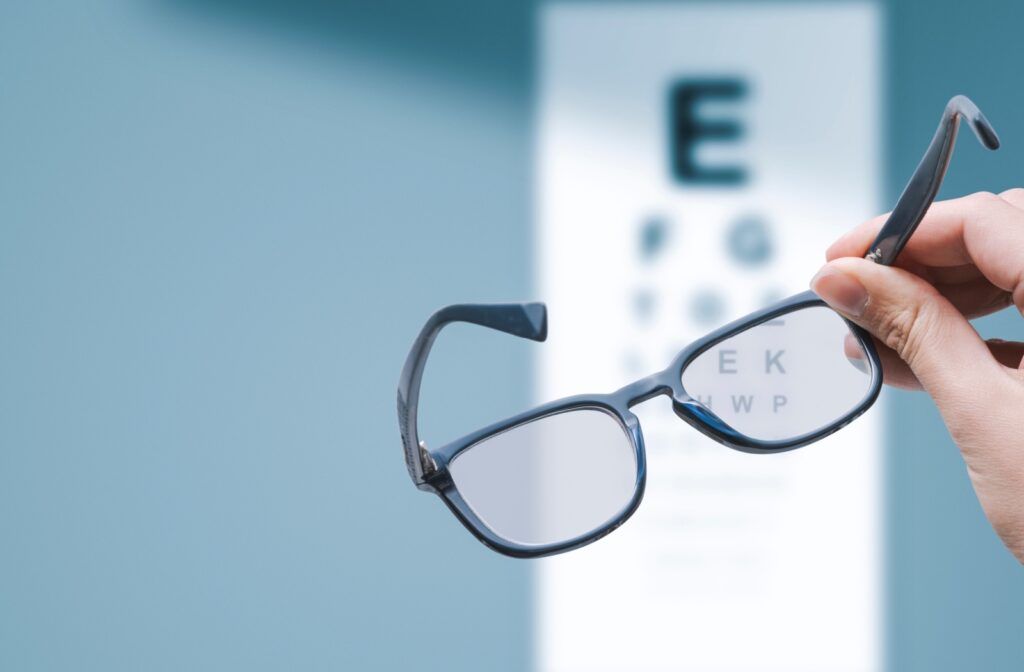Regular visits to the optometrist aren’t just for those with blurry vision, they’re a vital part of maintaining overall eye health. Whether it’s your first eye exam or you’re due for a checkup, understanding what happens during an eye test can make the experience less intimidating and more rewarding.
During an eye test you can expect:
- Initial eye health discussion
- Vision assessment
- Refraction test
- Eye muscle test
- Eye disease check
- Color blindness test
- Pupil dilation (if necessary)
After your exam your optometrist will provide solutions for potential vision correction or eye health needs.
Why Are Eye Exams Important?
Before we get into the details of what happens during the test, it’s essential to understand why eye exams play such an integral role in your health.
Maintaining Clear Vision
Eye tests can detect refractive errors like nearsightedness, farsightedness, and astigmatism that may be impacting your ability to see clearly. With the right prescription lenses, you can enjoy clear sight and ease eye strain.
Detecting Serious Health Conditions
Eye exams are about more than just correcting vision. Many systemic health issues like diabetes, high blood pressure, and even neurological conditions can first manifest in the eyes.
Your optometrist can catch warning signs through a comprehensive eye test, potentially saving you from critical complications.
Preserving Long-Term Eye Health
Early detection of age-related issues like cataracts, glaucoma, and macular degeneration can result in better treatment outcomes. Eye exams can help ensure problems are dealt with before they escalate.
What Happens During an Eye Test?
When you book your appointment, you might wonder what exactly your optometrist is checking for and how the tests work. Here’s a step-by-step breakdown of what you can expect.
1. Initial Discussion About Your Eye Health
The visit often starts with your optometrist or a technician asking about your medical history, current concerns, and any symptoms you may have noticed. Expect questions like these:
- Do you have a family history of vision problems or eye diseases?
- When was your last eye exam?
- Are you experiencing headaches, blurry vision, or difficulty seeing at night?
This is also the perfect time to discuss any eyewear or contact lens preferences.
2. Vision Assessment
This is where you’ll encounter the eye chart (known as the Snellen chart). This test measures your visual acuity—how clearly you can see objects at various distances.
You’ll read rows of letters that get progressively smaller to determine if your vision is 20/20 or if corrective lenses might improve your sight.
3. Refraction Test
Ever been asked, “which is better, lens 1 or lens 2?” during an eye exam? That’s a refraction test.
Using a device called a phoropter, your optometrist will present lenses with different strengths to find the prescription that best sharpens your vision.
4. Eye Muscle Tests
Your optometrist will assess the strength and coordination of your eye muscles using simple tests, such as following a moving light or object. This helps identify any misalignment or strain that could affect vision comfort over time.
5. Testing for Common Eye Conditions
We’ll perform specialized checks to look for signs of the most common, and sometimes silent eye conditions. These could include:
- Glaucoma Screening: A quick puff of air or gentle contact with your eye measures intraocular pressure, which helps identify glaucoma risk early.
- Cataracts Check: A slit-lamp examination lets us see the lens of your eye to detect any clouding caused by cataracts.
- Macular Degeneration and Retinal Health: Using retinal imaging we can examine the back of your eye for signs of degeneration or damage.
6. Color Blindness Test
This quick test checks if you can distinguish between certain colors, which is critical for diagnosing conditions like color blindness or other retinal issues.
7. Pupil Dilation (If Needed)
For a deeper internal view of your eyes, we may use dilation drops to widen your pupils. While this allows a thorough examination, you might experience light sensitivity and blurred vision for a few hours afterward.

What You Should Bring to Your Appointment
To ensure an effective and smooth eye exam, make sure to bring the following items:
- Your current glasses or contact lenses
- A list of medications you’re taking
- Your insurance information
- A description of any symptoms or vision changes you’ve noticed
Having these on hand helps your optometrist build a complete picture of your eye and general health.
The Benefits of Routine Eye Tests
Even if you feel that your vision is fine, routine eye tests bring plenty of benefits. These include:
- Detecting changes in your vision you might not have noticed
- Updating prescriptions to prevent eye strain or headaches
- Learning preventative care tips from your optometrist to extend your visual health
Build a Lifelong Partnership with Your Optometrist
Your relationship with your optometrist shouldn’t end after one visit. Building a consistent care routine ensures every aspect of your eye health is monitored over time. Make it a point to schedule regular checkups, even if your vision feels normal.
At Total Vision Novato, we provide tailored advice on habits that protect your eyes, from digital screen usage to UV protection.
Take the Next Step in Caring for Your Vision
Whether it’s your first visit or a routine check, understanding what to expect during an eye exam can make the process stress-free. These tests are essential for more than just clear vision, they’re an investment in your overall health.
If it’s been more than a year since your last eye test, now’s the perfect time to book an appointment with Total Vision Novato.




